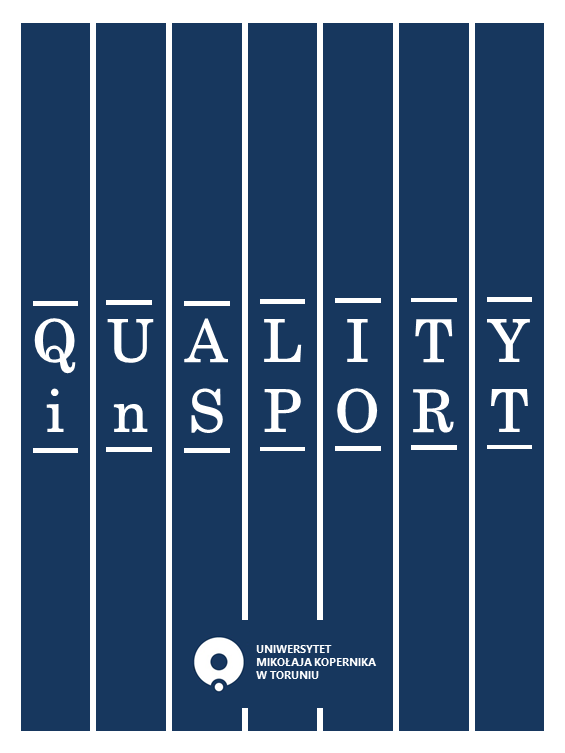Sleep Bruxism and Obstructive Sleep Apnea – Shared Pathophysiology or Coincidence?
DOI:
https://doi.org/10.12775/QS.2025.41.60146Keywords
sleep bruxism, obstructive sleep apnea, sleep arousal, rhytmic masticatory muscle activityAbstract
Introduction: Sleep bruxism (SB) is a jaw-muscle activity during sleep while obstructive sleep apnea (OSA) is a disorder of recurrent upper airway collapse during sleep [5, 1]. Recent research has noted frequent co-occurrence of SB in OSA patients.
Aim: This narrative review examines the relationship between SB and OSA to determine if SB and OSA share underlying mechanisms or simply coexist by chance.
Materials and Methods: A literature review was conducted using the databases such as Pubmed and Google Scholar.
State of knowledge: SB was prevalent in about one-third to one-half of OSA patients across studies [5, 6]. Mild-moderate OSA is associated with significantly higher SB activity than severe OSA [6, 12]. Both conditions share risk factors, and OSA itself has been identified as an independent risk factor for SB [6, 3]. Notably, treating OSA can lead to significant reductions in SB episode frequency [15, 11].
Conclusions: SB and OSA frequently co-occur and exhibit intertwined pathophysiology in certain patients. Awareness of this association is important: OSA may be one of the most frequent modifiable triggers of SB [6], and treating OSA can alleviate SB in those cases [11, 13]. An interdisciplinary approach involving dentists and sleep physicians is recommended to identify and manage coexisting SB and OSA [14].
References
1. de la Hoz-Aizpurua JL, Díaz-Alonso E, LaTouche-Arbizu R, Mesa-Jiménez J. Sleep bruxism. Conceptual review and update. Med Oral Patol Oral Cir Bucal. 2011;16(2):e231-e238. DOI: 10.4317/medoral.16.e231
2. Klasser GD, Rei N, Lavigne GJ. Sleep Bruxism Etiology: The Evolution of a Changing Paradigm. J Can Dent Assoc. 2015;81:f2:1-7. PMID: 25633110
3. Kuhn M, Türp JC. Risk factors for bruxism: A review of the literature from 2007 to 2016. Swiss Dent J.2018;128(2):118-124. DOI: 10.61872/sdj-2018-02-369
4. Wetselaar P, Manfredini D, Ahlberg J, et al. Associations between tooth wear and dental sleep disorders: A narrative overview. J Oral Rehabil. 2019;46(8):765-775. DOI: 10.1111/joor.12807
5. Tan H, Aiman N, Nasir NH, Win KM. Prevalence of sleep bruxism in adult obstructive sleep apnea patients and its association with sleep arousal indices. J Oral Facial Pain Headache. 2019;33(3):269-277. DOI: 10.11607/ofph.2068.
6. Martynowicz H, Gac P, Brzecka A, et al. The relationship between sleep bruxism and obstructive sleep apnea based on polysomnographic findings. J Clin Med. 2019;8(10):1653. DOI: 10.3390/jcm8101653
7. Wieckiewicz M, Bogunia-Kubik K, Mazur G, et al. Genetic basis of sleep bruxism and sleep apnea – a response to a medical puzzle. Sci Rep. 2020;10:7497. DOI: 10.1038/s41598-020-64615-y
8. Maluly M, Dal Fabbro C, Andersen ML, et al. Sleep bruxism and its associations with insomnia and OSA in the general population of São Paulo. Sleep Med. 2020;75:141-148. DOI: 10.1016/j.sleep.2020.06.016
9. de Baat C, Verhoeff M, Ahlberg J, et al. Medications and addictive substances potentially inducing or attenuating sleep bruxism and/or awake bruxism. J Oral Rehabil. 2021;48(3):343-354. DOI: 10.1111/joor.13061
10. Smardz J, Wieckiewicz M, Wojakowska A, et al. Incidence of sleep bruxism in different phenotypes of obstructive sleep apnea. J Clin Med. 2022;11(14):4091. DOI: 10.3390/jcm11144091
11. Wojda M, Kostrzewa-Janicka J. Influence of MAD application on episodes of obstructive apnea and bruxism during sleep – a prospective study. J Clin Med. 2022;11(19):5809. DOI: 10.3390/jcm11195809
12. Pauletto P, Polmann H, Réus JC, et al. Sleep bruxism and obstructive sleep apnea: association, causality or spurious finding? A scoping review. Sleep. 2022;45(8):zsac073. DOI: 10.1093/sleep/zsac073
13. Ning R, Chen J, Lu Y, Guo J. Obstructive sleep apnea: a follow-up program in its relation to temporomandibular joint disorder, sleep bruxism and orofacial pain. BMC Oral Health. 2023;23(1):578. DOI: 10.1186/s12903-023-03264-9
14. Sambale J, Koehler U, Conradt R, et al. Is sleep bruxism in obstructive sleep apnea only an oral health related problem? BMC Oral Health. 2024;24(1):565. DOI: 10.1186/s12903-024-04351-1
15. Cavalcante-Leão BL, Porporatti AL, Adriano RCF, et al. Effects of respiratory exercises in sleep bruxism and associated obstructive sleep apnea: a double-blind, placebo-controlled randomized clinical trial. Acta Odontol Scand. 2024;82(2):120-125. DOI: 10.2340/aos.v83.40252
16. Jordan AS, McSharry DG, Malhotra A. Adult obstructive sleep apnoea, Lancet. 2014;383(9918):736-747. DOI:10.1016/S0140-6736(13)60734-5
17. Blaszczyk B, Meira e Cruz M, Waliszewska-Prosol M, et al. Sleep bruxism and sleep structure in comorbid insomnia and obstructive sleep apnea (COMISA) syndrome: a polysomnographic study, J Clin Med. 2024;13(11):3154. DOI:10.3390/jcm13113154
18. Jun JC, Chopra S, Schwartz AR. Sleep apnoea, Eur Respir Rev. 2016;25(139):12-18. DOI:10.1183/16000617.0077-2015
19. Thayer MLT, Ali R. The dental demolition derby: bruxism and its impact – part 2: early management of bruxism, Br Dent J. 2022;232(10):703–708. DOI:10.1038/s41415-022-4249-z
20. Lei Q, Lin D, Liu Y, Lin K, Huang W, Wu D. Neuromuscular and occlusion analysis to evaluate the efficacy of three splints on patients with bruxism, BMC Oral Health. 2023;23:325. DOI:10.1186/s12903-023-03044-5
21. Hilgenberg-Sydney PB, Lorenzon AL, Pimentel G, Petterle RR, Bonotto D. Probable awake bruxism—prevalence and associated factors: a cross-sectional study, Dental Press J Orthod. 2022;27(4):e2220298. DOI:10.1590/2177-6709.27.4.e2220298.oar
Downloads
Published
How to Cite
Issue
Section
License
Copyright (c) 2025 Piotr Marcjasz, Anna Bioły, Agnieszka Buliszak, Monika Babczyńska, Ewa Chodkowska, Kinga Bielas

This work is licensed under a Creative Commons Attribution-NonCommercial-ShareAlike 4.0 International License.
Stats
Number of views and downloads: 655
Number of citations: 0



